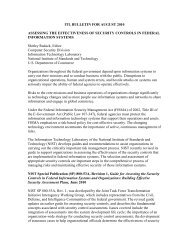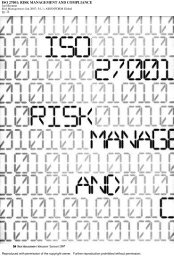Case.Study:.Sidmar.–.Arcelor
Case.Study:.Sidmar.–.Arcelor
Case.Study:.Sidmar.–.Arcelor
You also want an ePaper? Increase the reach of your titles
YUMPU automatically turns print PDFs into web optimized ePapers that Google loves.
The IT function at <strong>Sidmar</strong> is centralised providing services to its own organisation,<br />
as well as to the group commercial department. The IT committee<br />
at corporate level and the IBO committees at business unit level play an<br />
important role in the IT governance process. An important mechanism in this<br />
context is the well defined prioritisation process scoring IT projects on the<br />
basis of their profitability, competitive advantage, operational excellence and<br />
decision support capacity. Another important mechanism is the specific role<br />
of the IT architects which primarily focuses on building a close relationship<br />
between IT and business people. Further, a start is made by development<br />
KPIs for IT.<br />
Conclusion.Pilot.Studies<br />
From these pilot case studies, different drivers for adopting IT governance<br />
were identified. An important one was certainly the need to comply with<br />
Sarbanes-Oxley requirements, which impacts heavily on the control environment<br />
in IT. Although this is in the first place a US regulation, some of the<br />
pilot companies studied, felt the need to comply because their US mother<br />
company needed to comply or because customers/suppliers were requiring<br />
it. Other important drivers for IT governance were the pressure to achieve<br />
economies of scales after mergers and acquisitions and budget pressure,<br />
resulting in a smaller IT budgets for new projects. The challenge, of course,<br />
is then to optimally assign the remaining budget to projects and activities<br />
that are delivering value to the business. Finally, some pilot case companies<br />
mentioned that the IT governance project was more an effort of formalizing<br />
and structuring existing structures and processes that were applied already.<br />
Although the aforementioned IT governance definitions stated that IT governance<br />
is a primary responsibility of the board of directors, it appeared from<br />
the pilot cases that IT governance efforts are mostly not driven by business<br />
strategic level management. The board was seldom involved in IT governance<br />
and as a result, IT governance often had a rather operational focus. In all<br />
cases, IT governance was mostly an initiative of the IT department.<br />
From these six pilot cases, it is tentatively concluded that organisations are<br />
indeed applying a mix of structures, practices, and relational mechanisms<br />
to build up an IT governance framework. The IT department of these case





